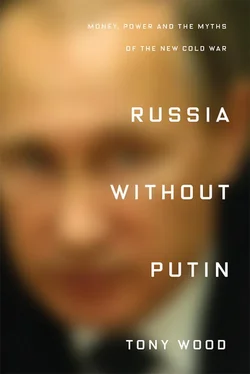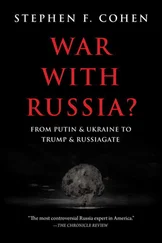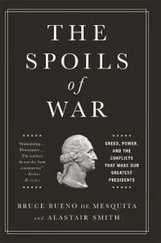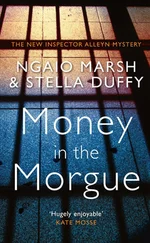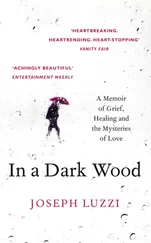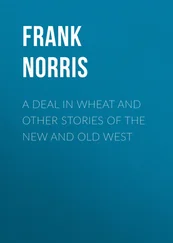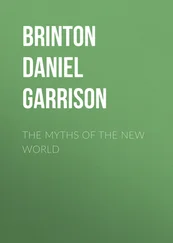In the new century, Dugin expanded his reach and readership, producing several documentaries and publishing dozens of books with sonorous titles such as The Fourth Political Theory (2009) and In Search of the Dark Logos (2013). He became an increasingly frequent presence on Russia’s TV screens, wheeled out to comment on the deeper reasons for the incompatibility between Russia and the West. With the Ukraine crisis, Dugin shot to international prominence, identified by many Western analysts as the geopolitical brains behind the annexation of Crimea and the most influential voice urging Putin to go still further. In July 2014 he called on the president to step up Russian intervention in eastern Ukraine – Dugin made a point of calling it ‘Novorossiia’ – in order to ‘save Russia’s moral authority’. {6} 6 Dina Newman, ‘Russian nationalist thinker Dugin sees war with Ukraine’, BBC News , 10 July 2014.
This merging of geopolitical designs with quasi-religious language was typical. Fittingly, in 2015, Dugin became chief editor of ‘Tsargrad’, a TV station funded by the Orthodox Christian oligarch Konstantin Malofeev and set up to wage an Orthodox information jihad against Western liberalism.
Dugin’s thinking has all along been an eclectic, thoroughly postmodern mix, but the core of it is geopolitical, deploying various warmed-over concepts to explain Russia’s inevitable confrontation with the West. From British geographer Halford Mackinder he picked up the idea of Eurasia as a ‘world-island’, a zone with Russia at its heart that served as ‘the geographical pivot of history’. From Carl Schmitt he adopted a binary opposition between land powers and sea powers (‘tellurocracies’ and ‘thalassocracies’), which would always ultimately set Russia against the West. These constructs not only offered an alternative to the Westernizing stance of the Yeltsin and early Putin governments, they also made Russia’s continued dominance of the countries surrounding it a matter of geographical and historical necessity. What might have been mere imperial nostalgia was reformatted as deep strategic thinking. Moreover, Dugin seemed to provide an explanation for the frustrations and ultimate failure of the Westernizing policy, and a higher purpose for the independent course Russia would now have to plot. Freed of the delusion that it might join the liberal West, the country could now pursue its Eurasian destiny.
In the 2010s, Dugin’s thinking and that of the Putin government have seemed increasingly aligned – leading some Western pundits to dub Dugin the Kremlin’s éminence grise , or even ‘Putin’s Rasputin’. But how much credence should we give to this? It’s true that Duginite terminology has crept into public discourse and official media. To a large extent, though, this has been part of a wider turn to the right under Putin, who over time has come to see himself as a defender of conservative values. (Not coincidentally, the thinkers and historical figures most commonly cited by the Kremlin in the 2010s have included the White émigré philosopher Ivan Il’in and the hard-line tsarist prime minister Pyotr Stolypin.) The Kremlin’s domestic policies have certainly been informed by a desire to defend Orthodox ‘civilization’, whether through laws against ‘gay propaganda’ or through persecution of non-Orthodox religious minorities; but again, such virulent prejudices are part of the standard repertoire of the right, in Russia as elsewhere.
Even in the realm of geopolitics, where one would expect to see Dugin’s stamp most clearly, the real significance and reach of the Eurasianist idea is far from obvious. During the 1990s and 2000s, Russian foreign policy documents made repeated references to ‘Eurasia’, but in the early 2010s the emphasis on ‘Eurasian integration processes’ became much stronger, thanks to the formation of the Eurasian Customs Union in 2010 and the Eurasian Economic Space in 2012. Two years later, these were combined into the Eurasian Economic Union, a single market and customs union comprising Russia, Kazakhstan, Belarus, Armenia and Kyrgyzstan. [15] Ukraine had been invited to join, but it quickly became clear that the EU Association Agreement and the Russian-dominated ‘Eurasian’ project were mutually exclusive; this put the Ukrainian government in a quandary, setting the stage for Yanukovych’s U-turn and the Maidan protests in 2013.
Yet there is no necessary relationship between these state-level trade pacts and the ‘civilizational’ murmurings of Dugin and his ilk. Even though Russia is by far the largest state in the Eurasian Union, the Union itself is nonetheless a deal made by sovereign governments, rather than an imperial Anschluss in the name of Russian ethno-national chauvinism. More to the point, regional trade pacts of this kind have become the global norm, from the EU’s single market to NAFTA, from Mercosur to the Trans-Pacific Partnership. The Eurasian Union is in that sense very much a latecomer, and remains distinctly underdeveloped relative to its peers.
There are, moreover, many different routes by which any kind of Russian government – liberal or conservative, far right-influenced or social-democratic – might have arrived at the same idea, none of which would have to involve a deeper commitment to neo-Eurasianist thinking. Indeed, the notion that the former USSR should constitute a privileged sphere of influence for Russia has been a constant in the country’s foreign policy since 1991, and a desire for a kind of post-Soviet Monroe Doctrine to be applied to Eurasia has been shared across the political spectrum. In 2003, for example, Anatoly Chubais – architect of the free-market reforms of the 1990s – called for Russia to establish a ‘liberal empire’ over the former USSR: he argued that the country ‘can and must do all it can to grow, strengthen and consolidate its leading positions in that part of the planet over the next 50 years’. {7} 7 Anatoly Chubais, ‘Missiia Rossii v XXI veke’, Nezavisimaia gazeta , 1 October 2003.
The escalating confrontation with the West may have struck some in Russia as proof of Dugin’s ‘civilizational’ diagnoses – the Ukraine crisis and its aftermath finally confirming Russia’s definitive exclusion from, and opposition to, the Western liberal order. But neo-Eurasianist ideas had no role in producing the confrontation itself. As we have seen, from the start of the post-Soviet era there were fundamental mismatches in power and strategic interests between Russia and the West. These generated tensions that steadily rose over time, and notably burst into the open in Ukraine in 2003–04, Georgia in 2008 and Ukraine again in 2013–14, among other places.
Ultimately, the recent prominence of Dugin and neo-Eurasianism should be understood as an attempt to fill the ideological void left by the pro-Western idea, as Russia’s relations with the West have deteriorated, and to give a larger meaning to the country’s geostrategic position and physical location. In that sense, neo-Eurasianism is less a cause of the Kremlin’s policy shifts than a symptom of Russia’s continuing dilemmas, less a coherent ideology than a mindset that seeks to make virtues out of the country’s uncomfortable situation. Its rise has certainly given oxygen to some ugly ideas, and these have made a difference to the tone of Russian policy as well as the rationales offered for it. But neo-Eurasianist fantasies cannot in themselves transform the conditions in which that policy is made.
_____
Russia’s geopolitical options will, for a considerable time to come, be shaped by a series of constraints. Several of these arise from dynamics internal to Russia, but the most important ones emerge at the global level. The most decisive feature of Russia’s present-day role in the world, which flows into every calculation it makes, is its intermediate status. Too big to be digested by regional blocs such as the EU, too independent of the US to admit into NATO, Russia is nonetheless no longer powerful enough to form a significant geopolitical or economic pole on its own. It occupies a difficult mid-category between the hegemonic US and a rising China on the one hand, and on the other a handful of large states, chiefly Brazil and India, that are rapidly leaving behind their status as ‘developing countries’. It remains the world’s largest country, with a still numerous and well-educated population, not to mention a nuclear arsenal and significant natural resources. But at the same time its economic weight is dwindling: in 2015, its GDP per capita was around a sixth that of the US, a fifth that of Germany and a quarter of the OECD average; it was roughly level with Brazil’s and Turkey’s, and only fractionally higher than China’s.
Читать дальше
